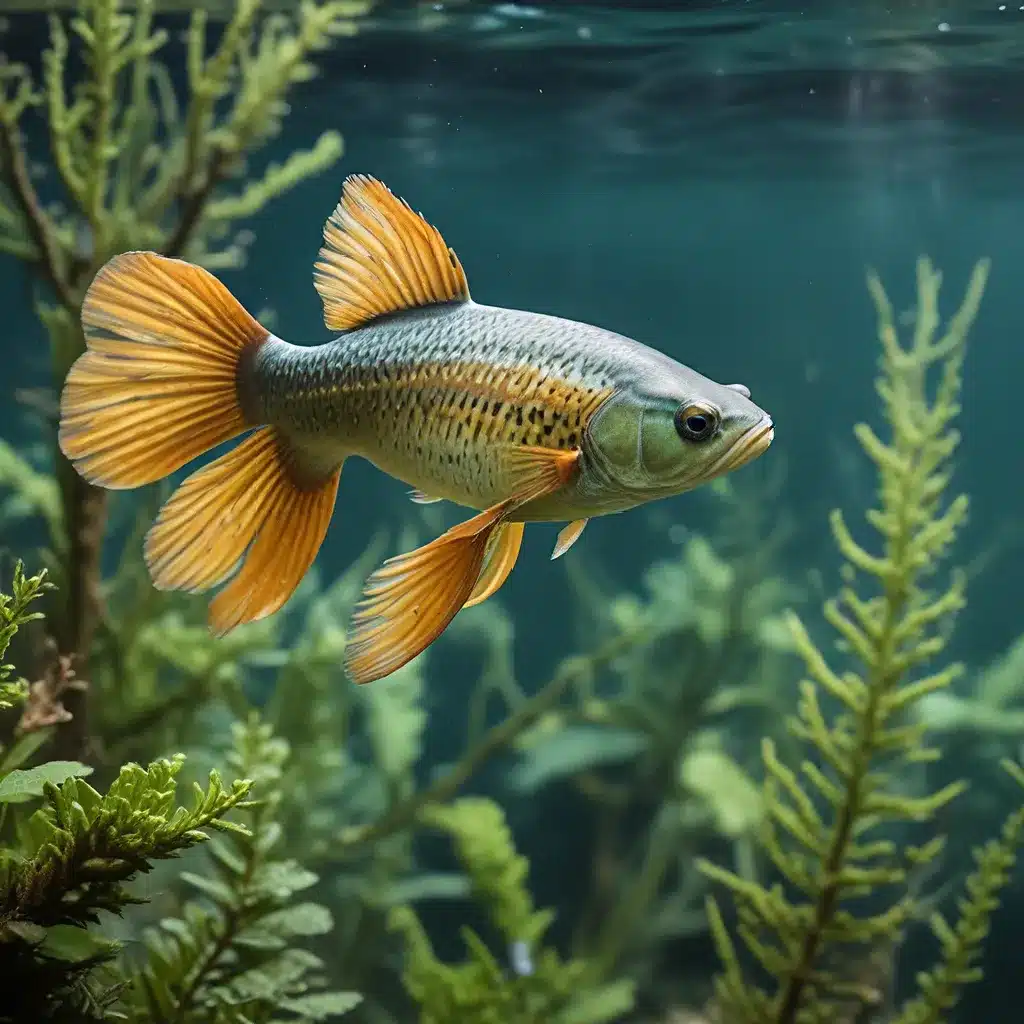
Exploring the Marvels of the Underwater World
Beneath the tranquil surface of aquariums and natural bodies of water lies a realm teeming with astonishing diversity. From the tiniest neon tetra to the majestic grandeur of the shark, the aquatic world brims with creatures that have evolved remarkable adaptations to thrive in their watery habitats. As we delve into this captivating domain, we unravel the mysteries of fish – one of the most varied and ancient groups of organisms on our planet.
Through the lens of Charles Darwin’s pioneering work, we can marvel at the intricate ways in which aquatic life has adapted to the unique challenges posed by their environment. In the unforgiving waters of the Antarctic, for instance, icefish have evolved a remarkable defense against the bone-chilling cold – they produce and carry special antifreeze proteins in their blood and body fluids, inhibiting the formation of deadly ice crystals. This ingenious adaptation, honed over millions of years, allows these resilient creatures to thrive in a realm that would instantly kill most land animals.
Delving even deeper, we encounter the extreme conditions of the Mariana Trench, the deepest part of the world’s oceans. Here, where the pressure is crushing and the temperatures are frigid, sea creatures have developed unique strategies to survive. They have an abundance of unsaturated fats in their cell membranes, which remain liquid even in the face of the extreme cold, and they collect piezolytes – organic molecules that prevent their proteins from becoming distorted by the immense pressure. These remarkable adaptations enable these aquatic denizens to not only survive but to thrive in an environment that would be utterly inhospitable to most organisms.
Senses and Survival: Adaptations for Life Underwater
The aquatic realm presents a unique set of challenges for its inhabitants, and they have evolved an array of specialized senses and capabilities to overcome these obstacles. Consider the Great White Shark, a formidable predator of the seas. Its sense of smell is so acute that it can detect a single drop of blood in a vast volume of water – a testament to the incredible sensitivity of its electroreceptors, which can pick up on the faintest of electrical signals emitted by its prey.
Similarly, the Bottlenose Dolphin has developed a remarkable ability to use echolocation, emitting high-frequency sounds and interpreting the returning echoes to navigate their aquatic environment and locate prey. This specialized sense allows them to thrive in the often murky and low-visibility waters of their habitat.
But it’s not just the predators that have evolved unique adaptations; their prey have also developed ingenious strategies for survival. The stout blacksmelt, for instance, has massive eyes that can capture even the faintest glimmer of light, allowing it to hunt in the perpetual darkness of the deep ocean. Meanwhile, the tripod fish relies on sensors in its pectoral fins to detect the movement of potential meals, compensating for its unreliable vision.
These remarkable adaptations showcase the extraordinary diversity and resilience of aquatic life, inspiring aquarium enthusiasts and nature lovers alike to delve deeper into the marvels of the underwater world. By understanding the intricate evolutionary histories and survival strategies of these captivating creatures, we can gain a deeper appreciation for the fragility and interconnectedness of aquatic ecosystems.
Collaboration and Compassion: The Surprising Adaptations of Aquatic Creatures
While the aquatic world is often characterized by the fierce struggle for survival, we also find remarkable examples of cooperation and altruism among its inhabitants. The Bottlenose Dolphin, for instance, is known for its tightly-knit social structures and complex cultural behaviors, including acts of compassion and selflessness.
When a member of a dolphin pod is targeted by a predator, such as a Great White Shark, the other dolphins will come to its defense, working in a coordinated effort to combat the threat. They may use their sturdy bony snouts as “battering rams,” slamming into the shark’s underbelly and gills, causing significant internal injuries. In some cases, these pod-wide attacks have even resulted in the shark’s demise, showcasing the remarkable power of cooperation and the protective instincts of these intelligent marine mammals.
Interestingly, this interspecies altruism has also been observed in encounters between dolphins and humans. There have been numerous reports of dolphins encircling and defending swimmers from persistent shark attacks, demonstrating a level of compassion that transcends the boundaries of their own species.
These examples of Bottlenose Dolphin behavior not only challenge the common misconception of “survival of the fittest” but also highlight the profound role that positive adaptive traits, such as cooperation and empathy, play in the flourishing and evolution of aquatic life. As Charles Darwin himself recognized, it is these very traits that often determine the overall success and resilience of a species.
Embracing the Wonders of the Aquatic Realm
As we continue to explore and unravel the mysteries of the aquatic world, we are constantly reminded of the extraordinary adaptations and evolutionary marvels that permeate these watery realms. From the ingenious antifreeze strategies of the icefish to the cooperative behaviors of the Bottlenose Dolphin, each creature’s story speaks to the incredible resilience and ingenuity of life on our planet.
By immersing ourselves in the captivating world of aquarium keeping and aquascaping, we have the privilege of witnessing these adaptations firsthand, fostering a deeper understanding and appreciation for the fragile balance of aquatic ecosystems. As we maintain our aquariums and nurture the delicate life within, we become caretakers and stewards of these miniature underwater worlds, ensuring that the wonders of aquatic life continue to enchant and inspire generations to come.
Whether you’re a seasoned aquarist or a curious newcomer to the hobby, the exploration of aquatic adaptations promises to be a journey of endless fascination and discovery. So dive in, and let the marvels of the underwater realm captivate your senses and ignite your imagination.

